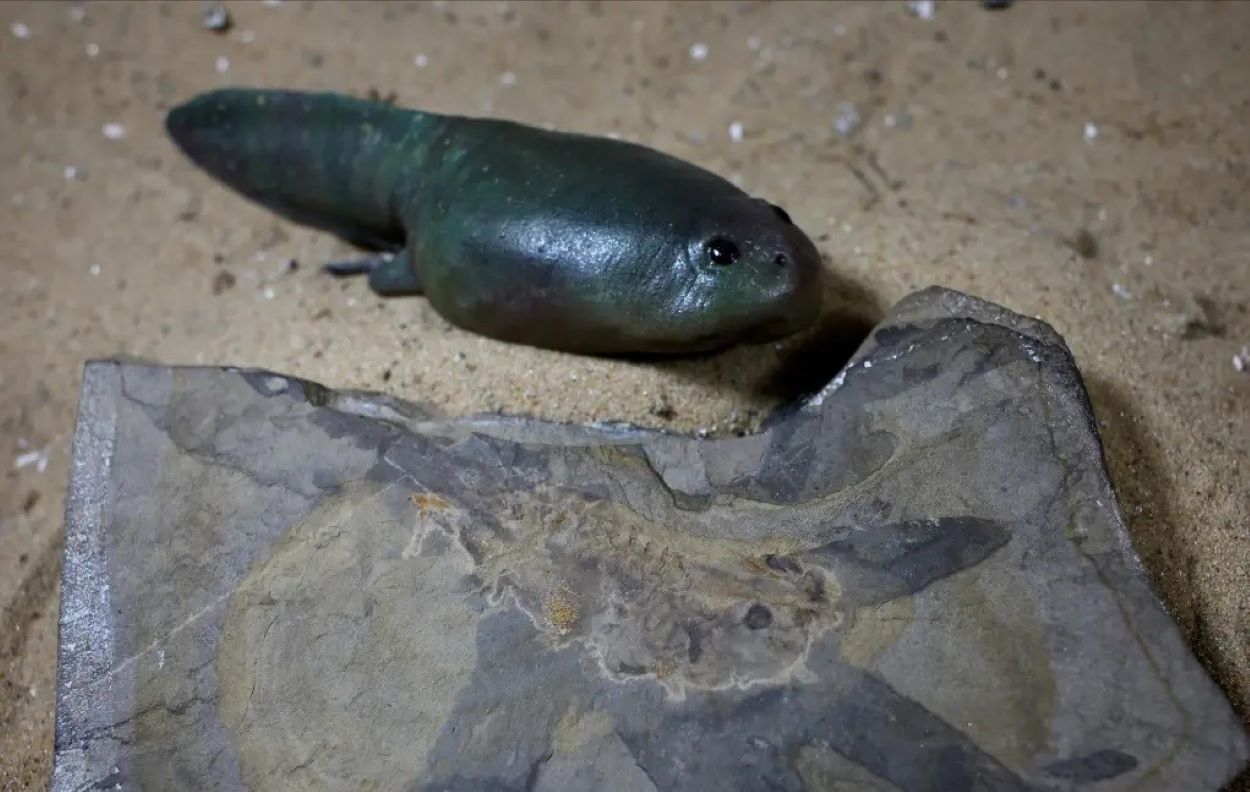Scientists in Argentina have made a groundbreaking discovery: they have unearthed the excellently preserved fossil remains of the oldest-known tadpole from the Jurassic Period, approximately 161 million years ago. This tadpole, a larval stage of a large frog species that coexisted with dinosaurs, offers significant insights into the evolution of frogs and toads.
The team reported that the 16-centimetre-long fossil demonstrates that modern tadpoles have remained largely unchanged from their ancient predecessors. While older frog fossils exist, this find represents the oldest tadpole fossils discovered to date.
Identified as belonging to the previously known species Notobatrachus degiustoi, the specimen’s exceptional preservation includes remnants of soft tissues—rarely seen in fossils—such as the tadpole’s eyes and nerves, which appear as dark imprints in their anatomical positions within the fossil.
The discovery occurred in 2020 during an excavation to find dinosaur remains at a ranch in the province of Santa Cruz, situated roughly 2,300 kilometres south of Buenos Aires in Argentina’s expansive southern Patagonian region.
Notably, the tadpole’s head and most of its body are intact. Frogs undergo a two-stage life cycle, transitioning from the aquatic larval stage to the adult form, and this particular specimen was in the late stages of that metamorphosis.






